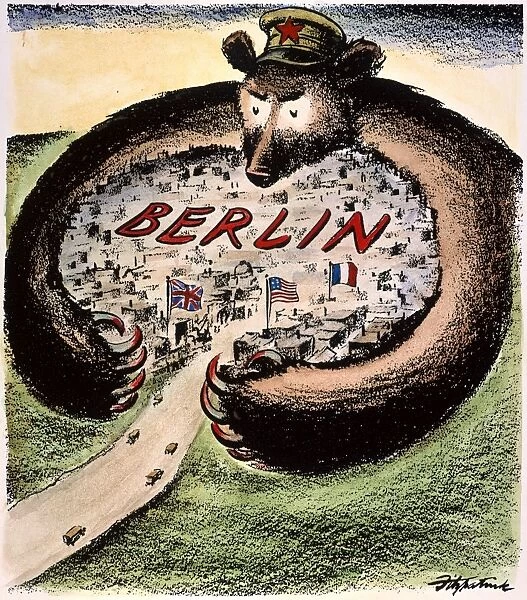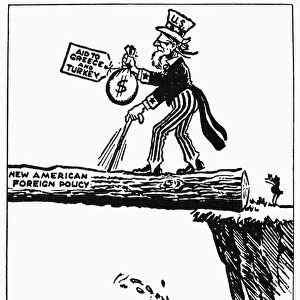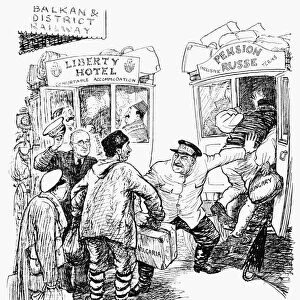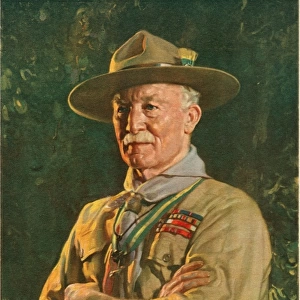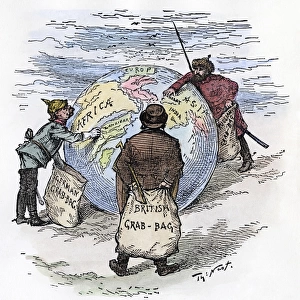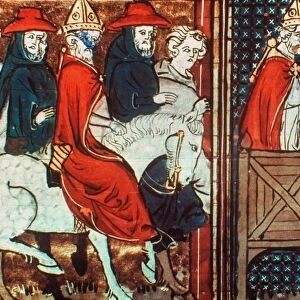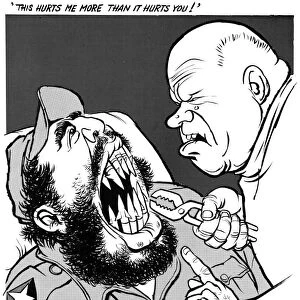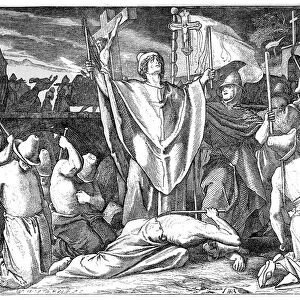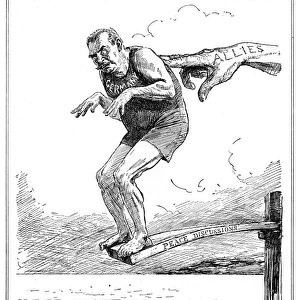Home > Granger Art on Demand > Cold War
How to Close the Gap?: American cartoon, 1948, by D. R. Fitzpatrick on the Russian attempt to drive the Western powers from Berlin by every possible means short of an outright act of war
![]()

Wall Art and Photo Gifts from Granger
How to Close the Gap?: American cartoon, 1948, by D. R. Fitzpatrick on the Russian attempt to drive the Western powers from Berlin by every possible means short of an outright act of war
CARTOON: COLD WAR BERLIN.
How to Close the Gap?: American cartoon, 1948, by D.R. Fitzpatrick on the Russian attempt to drive the Western powers from Berlin by every possible means short of an outright act of war
Granger holds millions of images spanning more than 25,000 years of world history, from before the Stone Age to the dawn of the Space Age
Media ID 7794515
1948 Bear Berlin Blockade Bolshevik Cold War Daniel Fitzpatrick Personification Political Acts Post War Robert Russian Uss R Iron Curtain
EDITORS COMMENTS
The print titled "How to Close the Gap?" captures a powerful American cartoon from 1948 by D. R. Fitzpatrick, depicting the Russian attempt to drive Western powers out of Berlin during the Cold War. The cartoon cleverly personifies Russia as a bear, symbolizing its strength and aggression in post-war politics. In this thought-provoking image, we see a determined bear representing Russia standing tall with an iron curtain draped over it, signifying their efforts to isolate Berlin from Western influence. The artist highlights that while Russia is not engaging in outright war, they are employing various political acts such as blockades and other means to achieve their goal. The significance of this cartoon lies in its portrayal of the tense atmosphere prevailing at that time. It serves as a reminder of how fragile peace can be and how easily conflicts can escalate into full-blown wars. By using symbolism and satire, Fitzpatrick effectively conveys the gravity of the situation faced by Western powers during this period. This historical artwork invites us to reflect on the complexities of international relations and reminds us that even seemingly small actions can have far-reaching consequences. It stands as a testament to human resilience and determination in overcoming challenges posed by ideological differences between nations.
MADE IN THE USA
Safe Shipping with 30 Day Money Back Guarantee
FREE PERSONALISATION*
We are proud to offer a range of customisation features including Personalised Captions, Color Filters and Picture Zoom Tools
SECURE PAYMENTS
We happily accept a wide range of payment options so you can pay for the things you need in the way that is most convenient for you
* Options may vary by product and licensing agreement. Zoomed Pictures can be adjusted in the Cart.

